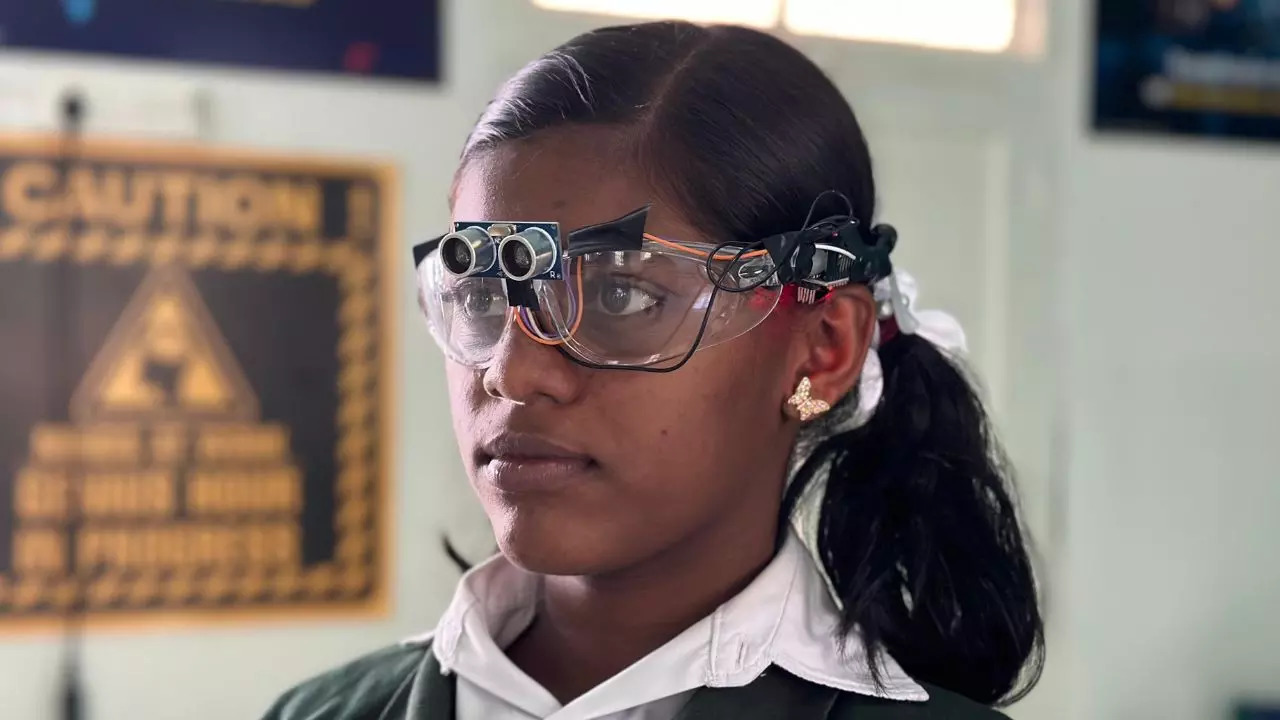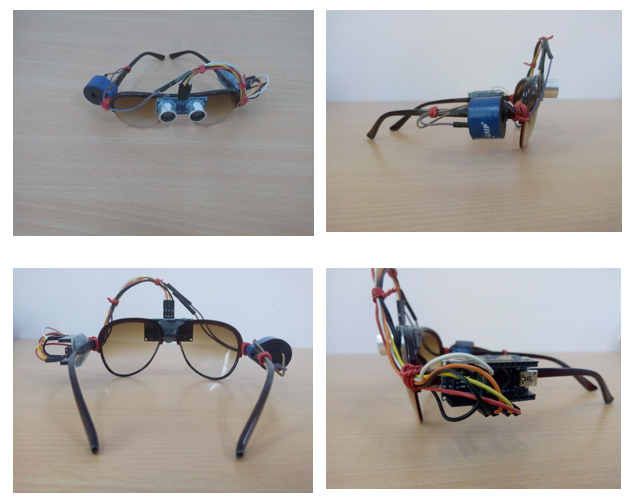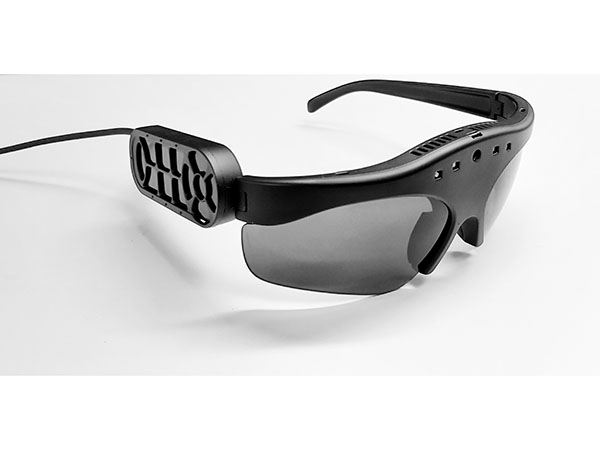Wearable Technology for Low Vision: Transforming How We Navigate the World
Wearable Technology for Low Vision: Transforming How We Navigate the World
Blog Article
Discover Advanced Assistive Tools for Individuals With Aesthetic Disabilities
The landscape of assistive modern technology for individuals with aesthetic disabilities is evolving swiftly, providing a range of cutting-edge devices that boost autonomy and involvement. From wise glasses that seamlessly merge aesthetic input with auditory assistance to advanced navigating applications that redefine spatial recognition, these tools are reshaping opportunities.
Smart Glasses Innovations
Smart glasses represent a considerable advancement in assistive modern technology for people with aesthetic disabilities. Furnished with video cameras and sensors, smart glasses can record real-time aesthetic info, which is then refined and conveyed to the individual through sound feedback or haptic sensations.
Moreover, advancements in man-made knowledge have better boosted the capabilities of smart glasses. Artificial intelligence algorithms can recognize faces, read message, and determine objects, making them vital devices for day-to-day tasks. Customers can get auditory hints that provide context about their setting, fostering independence and self-confidence.
Additionally, the ergonomic design and light-weight nature of numerous clever glasses make them suitable for extended use, making sure convenience while improving capability. As these gadgets remain to advance, they hold the potential to reinvent the means individuals with aesthetic problems experience their day-to-days live, linking the gap between availability and innovation. The recurring r & d in this field assurance to expand the possibilities for wise glasses, making them a vital part of contemporary assistive tools.
Navigation Apps and Equipment
Numerous navigating applications and tools have actually become necessary resources for individuals with aesthetic problems, significantly boosting their ability to traverse unknown settings. These modern technologies leverage general practitioner performance, audio hints, and real-time information to supply customers with exact navigating assistance.
One popular instance is the Aira application, which links users to qualified representatives that can supply aesthetic descriptions of surroundings and navigation assistance through an online video feed. This service boosts the customer's spatial understanding and self-confidence while navigating. An additional remarkable tool is Seeing Eye GPS, which provides voice-guided navigation and points of rate of interest, allowing users to access important details regarding their surroundings.

As innovation proceeds to breakthrough, the development of a lot more advanced navigating devices assures to additional empower people with aesthetic disabilities, helping with smooth mobility and assimilation into varied settings. Such advancements contribute in advertising a more comprehensive society.
Braille Modern Technology Developments
Recently, developments in Braille technology have considerably changed exactly how people with aesthetic disabilities accessibility info and engage with the globe around them. The development of portable Braille displays has actually changed analysis by enabling users to link wirelessly to smart devices, computer systems, and tablet computers. These tools transform message into Braille in real-time, allowing seamless interaction with electronic content.
Moreover, innovative Braille printers have actually emerged, boosting the manufacturing of tactile products. Modern embossers are faster and a lot more reliable, enabling the quick development of Braille papers and educational materials. This efficiency lowers the time and price connected with producing Braille sources, making them more obtainable to companies and schools.
Furthermore, the combination of Braille with various other innovations, such as man-made intelligence and artificial intelligence, has opened up new opportunities for individualized discovering experiences. Voice acknowledgment and synthesis technologies can match Braille, supplying an inclusive strategy to information dissemination.
As the need for inclusive education and learning and office settings expands, these technical improvements play an essential duty in empowering individuals with visual impairments, guaranteeing they have equivalent access to info and possibilities in various aspects of life.
Wearable Tools for Independence
A growing range of wearable gadgets is enhancing self-reliance for individuals with visual disabilities, supplying innovative solutions that improve navigation and everyday living. Braille displays and notetakers. These devices utilize innovative technologies to provide real-time feedback and assistance, promoting autonomy in different atmospheres

Wearable modern technology also consists of smartwatches that can be set with availability attributes, allowing users to obtain notices, track their areas, or also require assistance with the touch of a switch. Some devices integrate man-made intelligence to examine the setting, offering audio summaries of close-by things or people.
Voice-Activated Assistive Solutions
Leveraging voice-activated assistive options has changed the his comment is here landscape of support for individuals with aesthetic disabilities, supplying hands-free communication and accessibility to a variety of jobs. These modern technologies use natural language handling and expert system to allow individuals to do day-to-day activities with simple voice commands.

Additionally, recent advancements in voice recognition accuracy have improved the user experience considerably, suiting diverse accents and speech patterns. This inclusivity makes certain that more individuals can take advantage of these innovations, cultivating a greater feeling of freedom.
Verdict
Finally, the advancement of sophisticated assistive gadgets dramatically enhances the independence and high quality of life for people with aesthetic impairments. Developments such as smart glasses, navigation apps, Braille technology, wearable devices, and voice-activated remedies jointly foster a more comprehensive setting. These innovations encourage users to browse their surroundings with confidence and engage even more fully with the globe, eventually advertising higher access and level playing fields childrens optometrist for individuals encountering aesthetic difficulties.
The landscape of assistive innovation for individuals with aesthetic problems is evolving rapidly, offering a range of ingenious gadgets that enhance freedom and engagement.Smart glasses represent a substantial innovation in assistive modern technology for individuals with aesthetic problems. As these gadgets proceed to develop, they hold the potential to revolutionize the means people with visual problems experience their daily lives, linking the gap in between access and modern technology.In recent years, developments in Braille innovation have considerably transformed exactly how people with visual disabilities gain access to information and engage with the world around them. These technologies empower customers to navigate their surroundings with confidence and engage more fully with the globe, inevitably advertising greater access and equivalent opportunities for people encountering aesthetic challenges.
Report this page